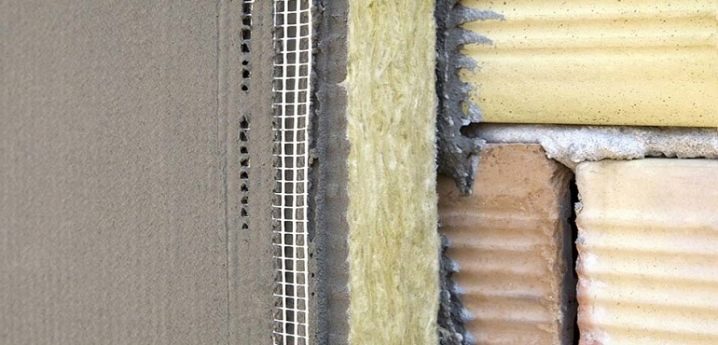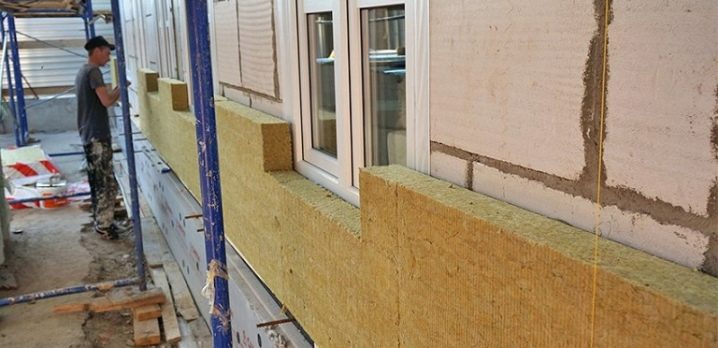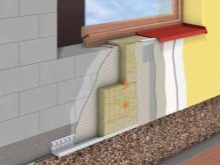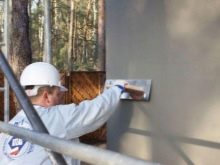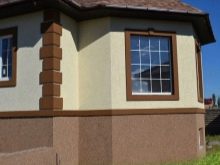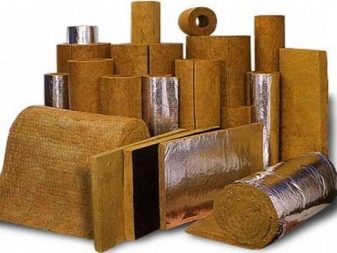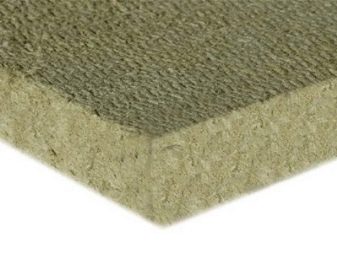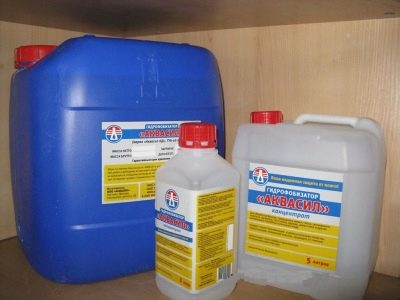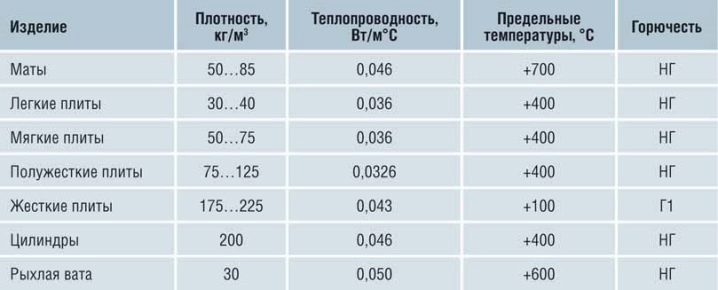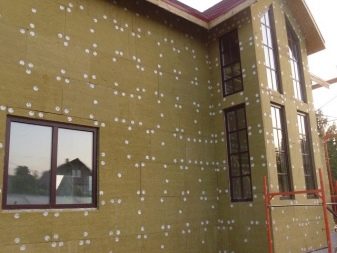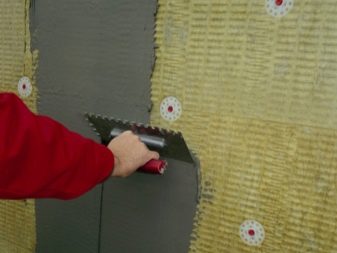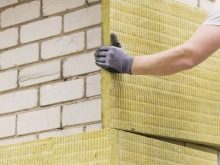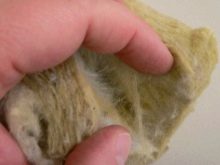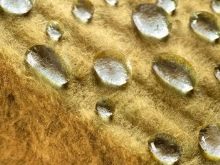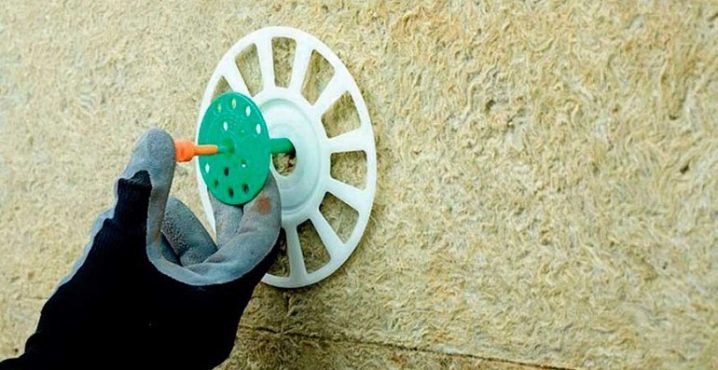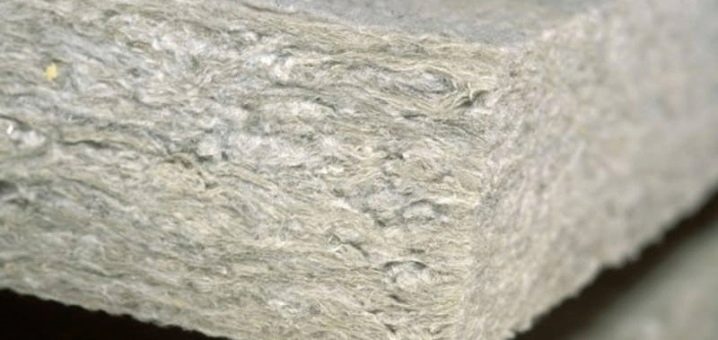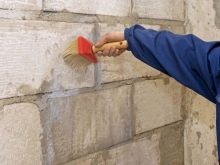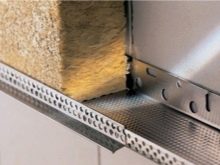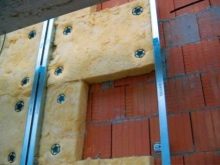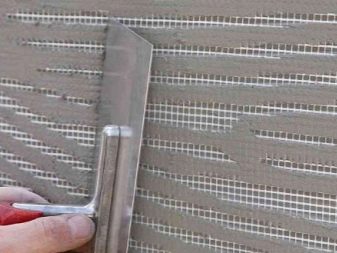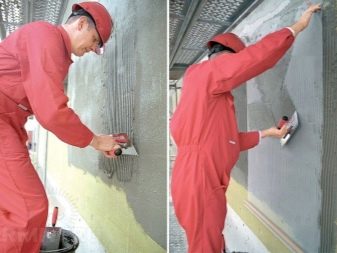Mineral wool under the plaster: the pros and cons
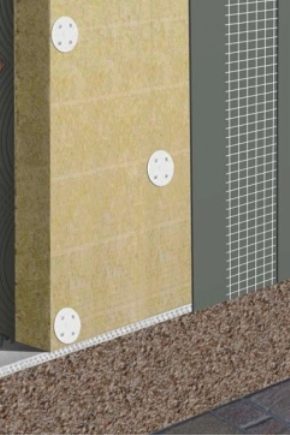
In climatic zones, where winter lasts for several months, it is very important to find a way to insulate homes without losing square meters of housing. An excellent solution would be to create a thermal insulation layer from the front side. To create it, you can use mineral wool.
Special features
Mineral wool - a very popular insulating material, which is placed under the plaster. Its structure is randomly intertwined fibers. The length and thickness of the fibers depend on the substance underlying the production of the material. To increase the strength of mineral wool, the fibers are compacted, but between them remains a space filled with air, which performs the insulating function. Despite the compaction procedure, mineral wool is a lightweight, elastic material, convenient for transportation, installation and having a low price.
Minwat has a wide range of advantages over other materials:
- it is a good heat and sound insulator;
- maintains a high level of fire safety;
- vapor permeable, which is necessary for the house to "breathe";
- it does not form fungi and mold;
- insects do not grow in it, it is "uninteresting" to rodents;
- is a relatively environmentally friendly and safe material (the release of harmful substances begins at temperatures above 300 degrees C).
Like any material, minwats have certain disadvantages:
- First of all, it is high dusting. Glass wool and slag wool are especially sinful with this. Their dust contains sharp small fragments, which, if they hit the skin, will cause damage and severe itching. Breathing dust with debris is also extremely harmful. To avoid such unpleasant consequences, installation work should be carried out using work clothes, a respirator and goggles.
- Another disadvantage is the use of formaldehyde resins in the manufacture product, and there is a possibility of phenol emission into the environment, which is unsafe for human health. However, these substances in the product is very small, and its use for outdoor work altogether reduces this harm to zero.In addition, phenol is released at very high temperatures, which are unlikely to occur in everyday real life. Stone mineral wool contains almost no phenol. Modern manufacturers, caring for the quality of the product, replace formaldehyde resins with other substances with a lower level of harmfulness. Nevertheless, work in the respirator and the use of vapor-tight PVC film during installation will protect against the possible risk of exposure to phenol.
- Serious minus may be the ability of the material to absorb moisture (this deficiency is absent in stone wool). Moisture may cause shrinkage of the insulation and its destruction. Therefore, all outdoor work must be carried out in warm, dry weather. To cover served for a long time, you need to follow the rules of installation, and do not forget to use a hydrophobic solution for processing the coating.
For mineral wool is important such indicator as the density, which is determined by the method of production. For different works use insulators of different density:
- The lightest (up to 80 kg / m3) is needed for indoor work.
- For exterior plastering works, a special facade series is needed.Its density is 125-165 kg / m3. Such a high density is required for the strength of the coating and for keeping the weight of the plaster.
This type of insulation is produced with plates of 50x100 or 60x120 cm. The average thickness of the plates is about 10 cm. Sometimes material with a high density can be found in rolls.
It is possible to warm mineral wool any surface: brick, concrete, wooden, block. However, different types of insulation and methods of its fastening are required for different surfaces, and some indicators can vary greatly. Therefore, before purchasing, carefully read the characteristics of the insulation and its compatibility with one or another type of surface, take into account all the pros and cons.
Kinds
Depending on the main ingredient, there are several types of mineral wool.
Glass wool
For its production take recycled glass, sand, lime and several other components. The mixture under the influence of high temperature melted into a homogeneous mass. It is then blown at high pressure using a centrifuge or grate with very small holes.
The thinnest threads formed are covered with a binder mixture to produce fibers.The fibers are compressed and cooled. Then a polymer composition is applied to them, and another thermal treatment is carried out. The latter types of processing are necessary for wool to acquire strength and elasticity, to become resistant to the effects of temperature changes and high humidity.
In addition to the acquired properties, glass wool has a low hygroscopicity and low thermal conductivity, so it is a suitable material to insulate the external walls of the house. When working with glass wool, it is necessary to protect hands and airways so that small glass particles do not damage them.
Stone wool
She has proven herself. For its production using various rocks. Basalt is considered the best, as it contains the least amount of impurities. It is also the most environmentally friendly, the content of toxic substances in it is minimized.
Stone wool is a durable and high-quality insulation, it costs more than glass wool. It is able to withstand heavy loads, does not deform, has a long service life. In the stone mineral water there are many layers of air, therefore it is an excellent sound and heat insulator.It can be used in conditions of high humidity, since moisture is practically not absorbed into it. However, it has good vapor permeability, it does not form condensation.
A distinctive feature of stone wool is its high refractoriness. Under the influence of fire, it melts, and the melting temperature, depending on the type, is 900-1000 degrees C.
Slag wool
It is produced from the waste of metallurgy, the raw material for it is blast furnace slag. It is the cheapest material, it absorbs moisture well and is unstable to sudden temperature changes. Therefore, it should not be used to insulate the walls of buildings, where there will be high humidity - moisture will cause the formation of acid, which will lead to damage to metal structural elements. Also, do not use the material for wooden walls - moisture will cause the wood to rot.
Nevertheless, slag performs well as heat and sound insulation. It is lightweight, soft and flexible material, it perfectly lends itself to be laid on uneven surfaces.
Mounting technology
Using mineral wool as a heater at home, apply the technology of "wet facade", that is, for all stages need an aqueous solution, and the finishing is plastering.
The technology includes several stages:
- Before installation, it is necessary to prepare the facade: clean the surface from dust, various dirt and oil stains. It is also necessary to remove cement flows, repair cracks and gouges, repair damage and level the surface. To eliminate the gaps, you can use a mounting foam or cement mortar.
- After that, it will not be superfluous to apply a primer with an antiseptic. This will improve the properties of the glue and minimize the conditions for the appearance of harmful microorganisms.
- When the surface is ready, the horizontal and vertical guides are fixed. As a frame, it is advisable to use a metal profile or a bar made of wood with a small thickness. Fastening the horizontal rail is done at 60 cm from the base with the help of construction dowels.
- Then the entire surface of the slab of mineral wool is covered with a special adhesive and firmly pressed against the wall. In the corners and center of the slab, holes are made to insert dowels with wide caps into them and plug them. This will more securely fix the slab,and will also help reduce its deformation during subsequent operation.
- When the insulation is attached to the entire surface of the facade, it should be reinforced. Reinforcing mesh is pressed into the mineral wool, which is pre-applied adhesive solution. It is preferable to use a grid with small cells, resistant to moisture and alkaline formations.
Finishing plastering can be started only when the adhesive composition is completely dry. If there are many irregularities on the surface, then before plastering it is necessary to apply a leveling layer. If there are no significant defects, the finishing layer can be leveled.
In this video you will find a master class on the installation of mineral wool under the plaster.
